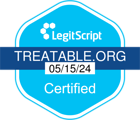How Soon After Unprotected Sex Can I Test for STDs?
Each STD has a different incubation period, which is the time it takes for the infection to establish itself in the body and become detectable through testing. These periods vary depending on the type of STD and can range from a few days to several weeks.
Common STDs and Their Incubation Periods
Chlamydia: The incubation period for chlamydia is typically between one to three weeks. However, in some cases, symptoms may not appear for several months or may even go unnoticed entirely, making testing crucial.
Gonorrhea: The incubation period for gonorrhea is usually within two to six days. However, similar to chlamydia, some individuals may experience no symptoms or delayed symptoms, emphasizing the importance of timely testing.
Syphilis: The incubation period for syphilis varies and can be divided into three stages. The primary stage may last for three to six weeks after exposure, while the secondary stage may occur a few weeks after the primary stage. The latent stage, which can last for years, is often asymptomatic. It's crucial to test for syphilis if you suspect exposure, regardless of the presence of symptoms.
HIV: The incubation period for HIV can range from two weeks to three months, depending on individual factors. During this time, the virus replicates in the body, and the immune system produces antibodies that can be detected through testing. It is advisable to test for HIV three months after exposure to obtain accurate results.
Herpes: The incubation period for herpes varies, with symptoms typically appearing within two to twelve days after exposure. However, herpes can also remain dormant for an extended period, and individuals can experience outbreaks sporadically.
Testing Timelines
Given the diverse incubation periods of different STDs, the optimal time to get tested may vary. Here are some general guidelines:
Rapid Tests: Rapid tests, such as point-of-care tests or home test kits, can provide quick results. Some of these tests can detect certain STDs within a few days to a week after exposure. However, it's important to note that these tests may not be as sensitive as laboratory-based tests and may have a higher chance of false negatives, especially during the early stages of infection.
Nucleic Acid Amplification Tests (NAATs): NAATs, often used for detecting chlamydia and gonorrhea, can provide accurate results within a few days to a week after exposure. These tests can detect the genetic material of the pathogens and are highly sensitive.
Antibody Tests: Antibody tests, which detect the presence of antibodies produced by the immune system in response to an infection, are commonly used for HIV and syphilis. These tests may not detect an infection immediately after exposure. For HIV, it is recommended to test three months after exposure for accurate results, while syphilis tests can be conducted three weeks to three months after exposure.
Testing for STDs after engaging in unprotected sex is crucial for early detection and appropriate treatment. The timing of the test depends on the specific STD and its associated incubation period.
